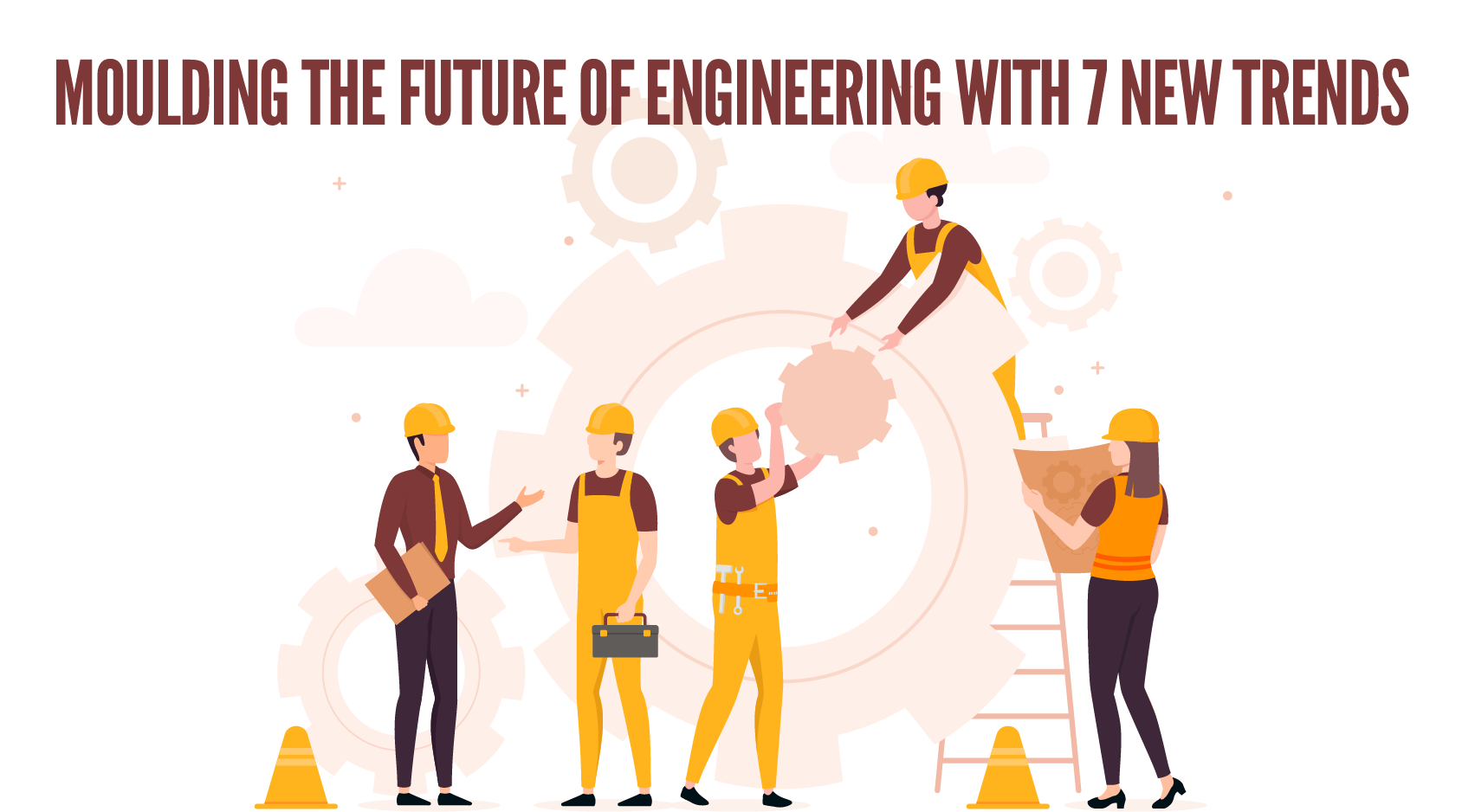Technology today has managed to break the monotony of traditional business partnerships and transform it into building blocks for digital ecosystems. Digital adoption is a massive opportunity for companies that leverage the right technologies. Within ten years, full-scale digitization will lead to huge annual global cost savings.

Some new adaptions that can help shape the future of engineering are:
CONTINUED INDUSTRY DIGITALIZATION
- The Engineering & Construction (E&C) industry is eventually adopting many of the digital technologies including digital sensors, mobile devices, BIM, augmented reality, virtual reality, drones, 3D scanning and printing, autonomous equipment, and advanced building.
- These technical innovations help companies improve their processes and fundamentally transform how building and projects come to life.
- As the construction industry shifts towards adopting cloud-based platforms, businesses must quickly develop strong partnerships to prepare for a rapidly growing collaborative network.
CLOUD COMPUTING
- The majority of companies have or will be using some aspect of Cloud computing.
- The future of Cloud computing will straddle both private and public clouds, adding new challenges to the role of IT.
- The increased use of cloud computing will put a premium on skill sets including those comfortable with API (application programming interface) development and a DevOps (unifying software development and software operation) environment.
- It will also mean a strategic shift in the mindset of many IT professionals from working with equipment to applications.
VR AND IMMERSIVE ARCHITECTURE
- Imagine an artificial world that you can observe, walkthrough, reach out to touch objects and see everything around you respond in real-time.
- This is immersive virtual reality and these spaces are created using a combination of computer graphics, wireless tracking technology, headsets, HD projectors, polarized glass and more -- all working together to create interactive and real-life experiences.
- The world of 3D virtual design and engineering is a fast-growing field and there's some seriously forward-thinking happening in these fields.
BIG DATA AND SMART CITIES
- Smart cities, the cities of the future, are now becoming a reality.
- Although Big Data (data sets that are so big and complex that traditional data-processing application software is inadequate to deal with them) has a lot of buzz around it, we believe that in many ways it is still a relatively new and unexplored concept. However, its potential for human analysis is already obvious. This makes it a perfect and integral part of the planning and creation of smart cities.
- As the population grows and resources become scarcer, the efficient use of these limited goods becomes more important
- Smart cities are a key factor in the consumption of materials and resources
- Built on -- and integrating with -- big data, the cities of the future are becoming a realization today
ARCHITECTURE ROBOTS AND 3D PRINTERS
- The way we make things has changed but will change even more drastically Robotics is making its way to the construction industry
- It won't be long before we are assisting in designing to a construction process that involves assembly robots. Assisted robotics, in which a human and robot work together to direct the construction process, is also on the edge.
SUSTAINABILITY
- Sustainable architecture holds the key to an environmentally positive future. Only by living more economically with our resources can we hope to protect our environment and climate. The philosophy behind sustainable architecture is all about reducing waste
- This not only means physical waste but minimizing energy loss as well. By keeping the energy we consume within our buildings for as long as possible, we need less supply in the first place
- Using less energy to keep us comfortable means that we can become environmentally responsible and more resource efficient, which are both vital to reducing the effects of climate change.
ARTIFICIAL INTELLIGENCE (AI)
- AI enables producers to make sense of the overwhelming data that their factories, operations and consumers generate, and to transform that data into meaningful decisions.
- Today, 70 per cent of captured production data goes unused.
- Applying AI to the connectivity of the Internet of Things (IoT), producers are able to orchestrate and streamline business processes from desktops to machines, across department walls and tiers of suppliers.
- The most promising immediate opportunities for applying AI in production systems are in quality management, predictive maintenance and supply chain optimization.
- AI-enabled products will be a game-changer for value propositions addressed to customers, and producers must be ready to orchestrate the value networks required to deliver these.
Read Also: Does engineering study fulfill your sky-high dreams??











